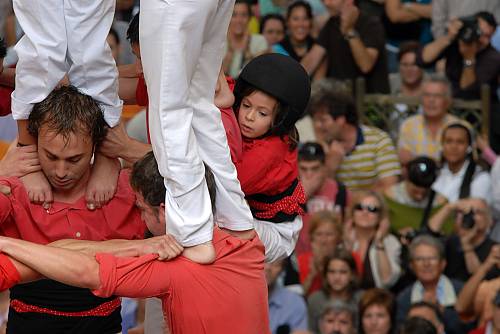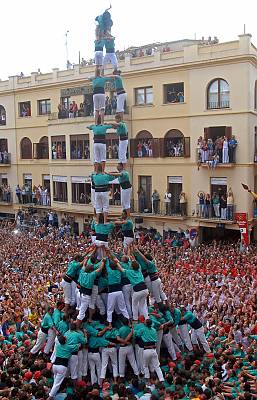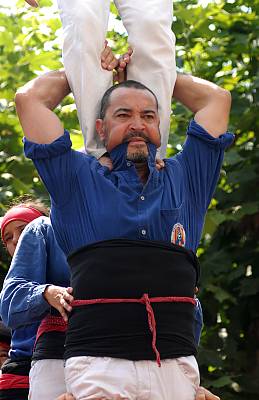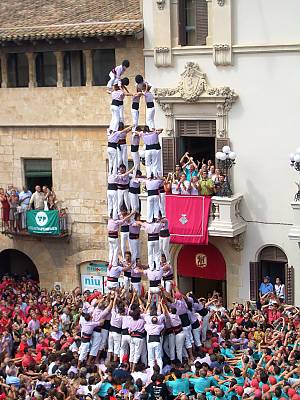Human towers
Inscribed in 2010 (5.COM) on the Representative List of the Intangible Cultural Heritage of Humanity

Castells are human towers built by members of amateur groups, usually as part of annual festivities in Catalonian towns and cities. The traditional setting is the square in front of the town hall balcony. The human towers are formed by castellers standing on the shoulders of one another in a succession of stages (between six and ten). Each level of the tronc, the name given to the second level upwards, generally comprises two to five heavier built men supporting younger, lighter-weight boys or girls. The pom de dalt – the three uppermost levels of the tower – comprises young children. Anyone is welcome to form the pinya, the throng that supports the base of the tower. Each group can be identified by its costume, particularly the colour of the shirts, while the cummerbund serves to protect the back and is gripped by castellers as they climb up the tower. Before, during and after the performance, musicians play a variety of traditional melodies on a wind instrument known as a gralla, setting the rhythm to which the tower is built. The knowledge required for raising castells is traditionally passed down from generation to generation within a group, and can only be learned by practice.









